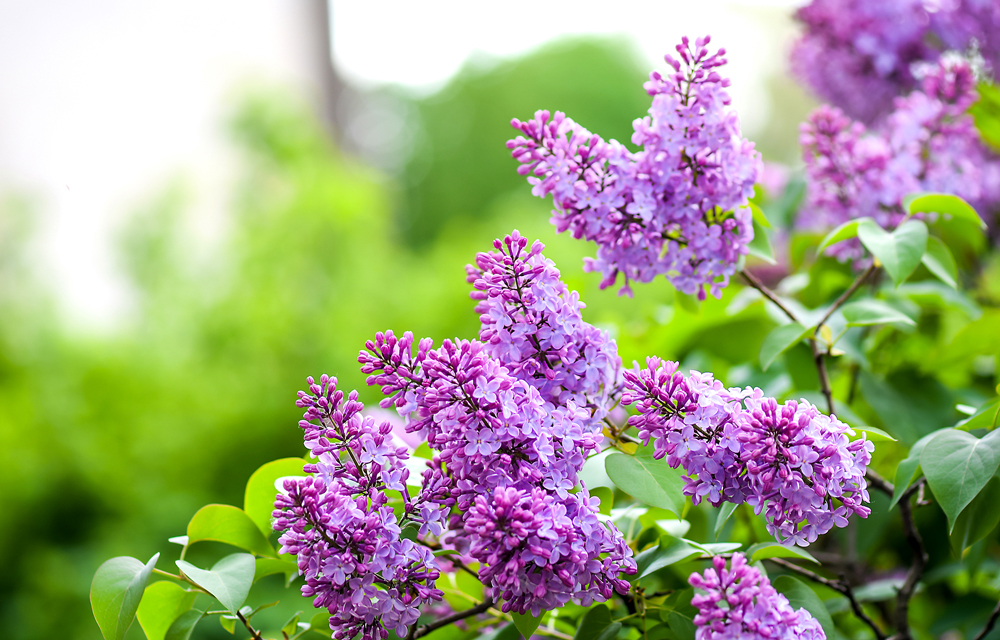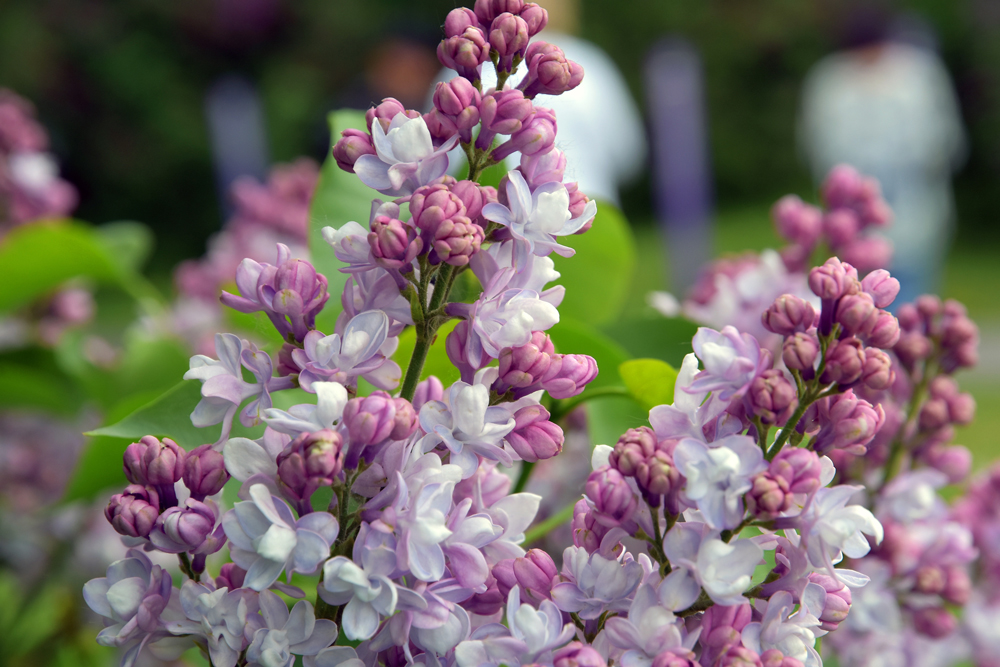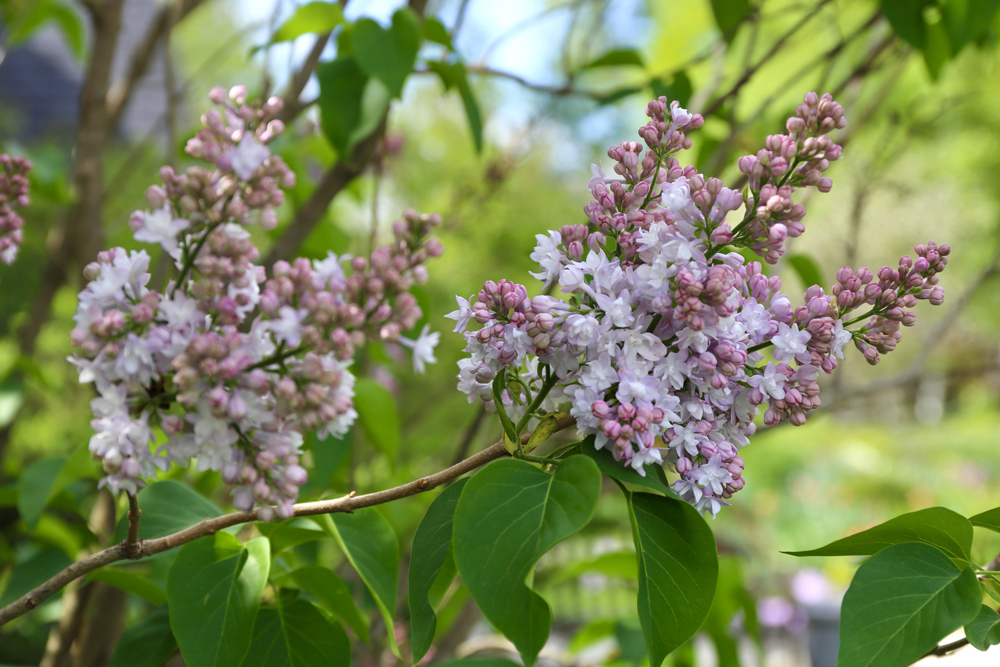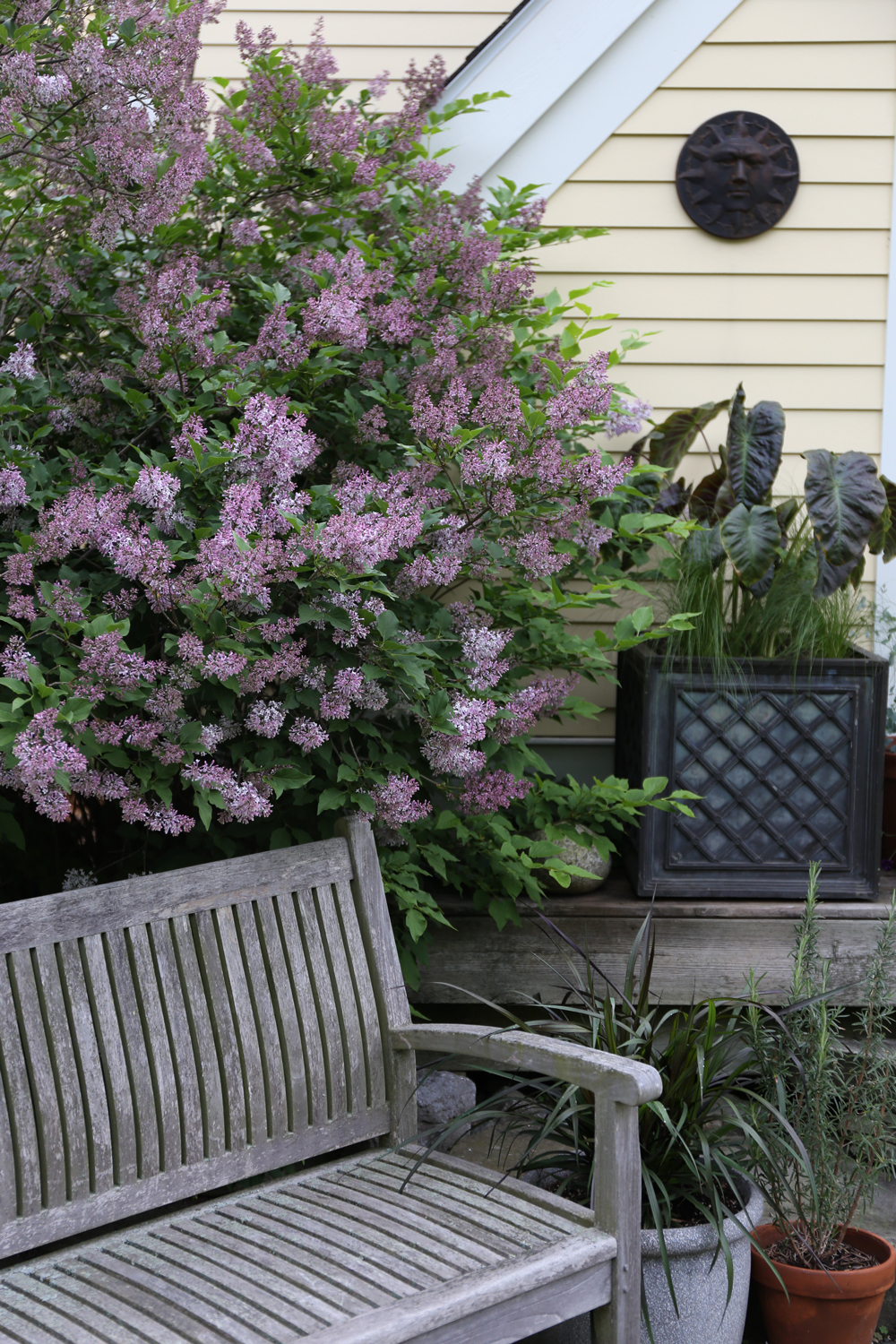Your Guide to Planning, Planting and Growing Lilacs
Lilacs (Syringa vulgaris) are carefree, long-lived shrubs that produce an abundance of fragrant blooms during mid to late spring. They are available in a range of heights, from compact 4’ shrubs to large, 20’ tree forms. The flower clusters may contain single or double florets, in colors that include white, pink, lilac, purple and burgundy, plus a number of bicolors.

Plan for Success
Lilacs flower best when they are grown in full sun. Though these shrubs also tolerate some shade, they need a minimum of 6 hours of sun per day to produce a good display of flowers.
Lilacs tolerate very cold winters. In fact, most lilacs require several months of cold weather in order to flower well. Gardeners in areas with mild winters (hardiness zones 7 and 8), should plant “low-chill” lilacs that are bred to bloom even without cold temperatures.
Bare root lilacs should be planted in very early spring. Lilacs purchased in containers may be planted in spring, summer or fall.

How to Plant Lilacs
Loosen the soil to a depth of at least 12” and mix in several handfuls of compost and ½ cup of all-purpose granular fertilizer (follow package directions).
Put the roots into the hole. Position the crown of the plant (where the roots meet the stem) so it is even with the surrounding soil.
After covering the roots with soil, water slowly and deeply to make sure the roots are in good contact with the surrounding soil.

Where to Plant Lilacs
It's important to consider the mature size of the lilac you are planting and give it enough space to reach its full potential. Also note the plant’s preferred sun exposure and find a place where it will get the right amount of light. Lilacs perform best in well-drained soil with consistent moisture.
Lilacs may be planted almost anywhere around your home. Depending on the plant’s mature size, you can use it to provide structure in a garden, to mark the corner of your house, to beautify an outbuilding, create a hedge or add variety to a mixed shrub planting.
Most lilacs are susceptible to powdery mildew. This relatively harmless fungal disease forms a white film on the leaves. To discourage powdery mildew, be sure there is good air circulation around the plant. A sunny location will also inhibit the disease by keeping the foliage as dry as possible.

What to Expect
It takes most newly planted shrubs a full growing season to settle in and establish their roots. During this time, it is important to water deeply (enough to reach the root zone) once per week unless natural rainfall is adequate. Mulching the surface of the soil around the plant with shredded bark or shredded leaves will help keep the roots moist and minimize weed growth.
Lilacs begin to grow more vigorously in the second year after planting. At this point the plant can also go for longer periods without water, though this depends on your climate and growing conditions. Flowering may not begin until the third year, and you can expect it to increase as the plant matures.

How to Care for Lilacs
Lilacs can be pruned to control the shape of the plant, to cut away aging or damaged branches, and to remove spent flower heads. Timing is important because the flower buds that open in spring are formed during the summer of the prior year. Prune lilacs right after they bloom to avoid cutting off next year’s flower buds. Note that deadheading spent flowers is cosmetic and does not affect the plant's performance.
While most lilacs have a single flush of flowers in spring, there are some cultivars that produce flowers intermittently throughout the growing season. For these “reblooming lilacs”, cutting off the spent blossoms right after the flowers fade helps encourage additional flower production.
Lilacs may be fertilized annually, starting in the late winter of their second year. Use a granular all-purpose fertilizer and follow package directions. Remember that fertilizing this year will help the plant form next year’s blooms.
Most lilacs send up “suckers”, which are new stems that emerge from around the base of the plant. These may be pruned off at the ground level, or you can allow them to grow for a fuller plant.
As lilacs age, they may grow taller than you like, and the number of blooms can decline. To rejuvenate the plant, begin an aggressive early spring pruning routine. The first year, remove one-third of the oldest branches, cutting them back to a height of 12 to 15 inches. This will stimulate the growth of new shoots and will refresh the plant without sacrificing a full season of blooms. This may be repeated each year until all the old growth has been removed.
